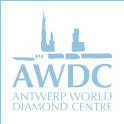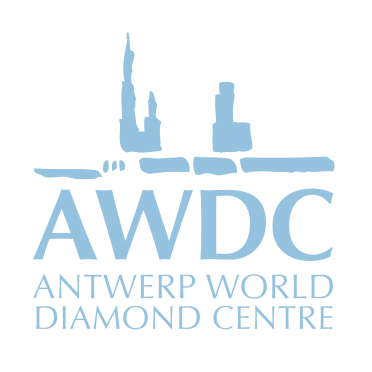- Home
- What can we do for you
- Starting a Business in Antwerp
- 10. Intellectual Property
- G7/EU Sanctions
- Registered Diamond Companies
- Banking and Taxes
- Antwerp Diamond Tender Facility
- Diamond Office
- Resources and Regulations
- Sponsorship Request
- Brilliant Benefits
- Doing Business in Antwerp: Contact List
- Starting a Business in Antwerp
- 1. Formalities, Registrations and Declarations for Diamond Traders
- 2. Founding a Company in Belgium
- 3. Types of Companies in Belgium
- 4. Methods to Acquire Companies in Belgium
- 5. Commercial Property
- 6. Insurance
- 7. Labour in Belgium
- 8. International Agreements
- 9. Subsidies in Belgium
- 10. Intellectual Property
- Jobs
10. Intellectual Property
Intellectual property covers patents, trademarks, industrial designs and models, and copyrights.
Patents
A patent is an intellectual property right, granted to an inventor, for a limited period of time. The rights of the inventor include the right to prevent others from making, using, selling, or distributing the patented invention without permission of the inventor. In return for this protection, the inventor needs to make the details of his invention public.
The office where you will have to submit your application for a patent will depend whether you want to obtain a Belgian, European or international patent.
The rules with respect to patents are set out in the European Patent Convention, which can be consulted here: http://www.epo.org/law-practice/legal-texts/html/epc/2010/e/ma1.html
Further information on the subject and the application forms for Europe can be found on the website of the European Patent Office (EPO): http://www.epo.org/applying/european.html
If you wish to apply for only a few national protections, it could be cheaper to apply for separate national patents at each of the national patent offices. For Belgium, the Belgian Office for Intellectual Property (OPRI)[1] is responsible. Please review the list of contacts to find the contact details of the Belgian Office for Intellectual Property.
1 The Belgian Office for Intellectual Property (BOIP) can be found at the following address: North gate III / Boulevard du Roi Albert II, 16 / 1000 Bruxelles
Trademarks
Trademarks have several functions, such as distinguishing quality labels, origin, warranty and trust, advertising and goodwill functions. In order to get protection for your trademark, you must have a sign (visual character) and it must have a distinctive character. A trademark gives the trademark owner the right to prevent any use of identical or similar signs to the trade mark. The criterion is ‘confusion’ between different trademarks in the relevant target audience. For more information on the legal rules and regulations, please find the Benelux Treaty regarding Intellectual Property on the website of the BOIP (http://www.boip.int).
The first step for international protection for a Belgian company is always a Benelux trademark. In order to file for protection with the Benelux, there is a mandatory deposit at the Benelux Office for Intellectual Property (BOIP) in The Hague. The application form can be completed online via the website of the BOIP.
For more information or blank application forms, please find the contact details of the Benelux Office for Intellectual Property (BOIP) in the list of contacts. Filing for a European trademark can be done with the Office for Harmonisation in the Internal Market (Trademark and Designs) (OHIM) (http://oami.europa.eu/)
Under the Madrid Agreement and the Madrid Protocol, it is also possible to register for an international trademark protection. This agreement provides for protection in 87 countries (at the most) by filing only one application with the World Intellectual Property Organization (WIPO). More information can be found here: http://www.wipo.int/.
If you wish to obtain protection in a country which is not covered by the European or the International trademark protection, you will need to obtain that protection with that country’s national trademark office, which can be expensive.
Industrial designs and models
The protection of designs and models, belongs to the industrial intellectual property domain and registering provides an opportunity to protect your drawings, models and designs. Protection requirements are obvious: novelty and individual character. It gives the holder the right to object to any design or model, which has the same outward appearance. This includes all features, in particular, the lines, contours, colours, shape, texture and/or materials of the product itself and/or its ornamentation. For more information on the legal rules and regulations, please find the Benelux Treaty regarding Intellectual Property on the website of BOIP as mentioned above in 10.2.
For more information or blank application forms for the protection of design, please contact the Benelux Office for Intellectual Property (BOIP) or the Office for Harmonisation in the Internal Market (Trademark and Designs) (OHIM), the contact details can be found in the contact list.
Furthermore, an international design protection provides for protection in 62 countries (at the most) by filing only one application with the World Intellectual Property Organization (WIPO). More information can be found here: http://www.wipo.int/.
i-DEPOT
Good ideas, which might require safekeeping, can apply for the i-DEPOT. The i-DEPOT provides evidence of the identity of the creator whilst keeping the content of the idea confidential. It does not constitute an intellectual property right, but it does provide conclusive evidence of the date of the idea, which can be of use in a possible future dispute. For more information, please consult the website of the Benelux Office for Intellectual Property (BOIP).
Copyright
A copyright gives the holder the exclusive rights to an original creative and artistic work, be it for a limited period of time only. The requirements are that the idea must be original and it must be put to use. It gives the holder the right to object to any copying, distributing, altering and displaying creative, literary and other types of work.
You can create a copyright by having a public notary publish an official document, or by contacting one of the copyright communities: http://www.sabam.be/, http://www.scam-sacd.be/ or http://www.sofam.be/.
Confidential information and trade secrets
Any confidential business information which provides the company a competitive benefit, such as information regarding commercial or industrial innovation, is considered as a trade secret.
Consequently, only the holder of the trade secret can make use of the information. You can protect your trade secrets by introducing a contractual confidentiality clause in your commercial contracts .
Diamond shapes
A difference can be made between the protection of the name of a diamond shape, and the protection of the diamond shape itself. The name of a diamond shape can be protected by means of a trademark or by copyright.
· A trademark is often used to with respect to the name of a diamond shape. This gives the holder to prevent others from using this name for diamond shapes, which are identical or similar.
· The name of a diamond shape might also be protected by copyright. However, in order to obtain copyright protection for a diamond shape, the name has to be an expression of the personality of the maker, which is difficult to obtain for single words or a short combination of words.
A diamond shape itself can be protected as a design or a model, or as a patent.
· A diamond shape can be protected as a design or a model, when the design is new and has a distinct character.
· A diamond shape can also be protected by patent law when the diamond shape can be considered as a result of an invention which can be industrially applied. There are very few situations in which this protection will come into the picture.
For more information on intellectual property rights or protection of the name/shape of a diamond, we advise to contact a specialised consulting firm. Contact details can be found in the list of contacts.






